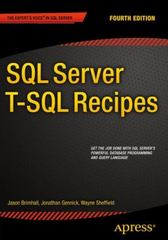Question
Write a toString method for the Scores class. It should print the Scores object as follows: [(EntryName, EntryScore), (EntryName, EntryScore), (EntryName, EntryScore) , (EntryName, EntryScore),
Write a toString method for the Scores class. It should print the Scores object as follows:
[(EntryName, EntryScore), (EntryName, EntryScore), (EntryName, EntryScore) , (EntryName, EntryScore),
(EntryName, EntryScore), (EntryName, EntryScore) ,(EntryName, EntryScore), (EntryName, EntryScore),
(EntryName, EntryScore) , (EntryName, EntryScore)]
GameEntry.java
public class GameEntry
{
protected String name; // name of the person earning this score
protected int score; // the score value
/** Constructor to create a game entry */
public GameEntry(String n, int s)
{
name = n;
score = s;
}
/** Retrieves the name field */
public String getName()
{
return name;
}
/** Retrieves the score field */
public int getScore()
{
return score;
}
/** Returns a string representation of this entry */
public String toString()
{
return "(" + name + ", " + score + ")";
}
}
Score.java
public class Scores
{
public static final int maxEntries = 10; // number of high scores we keep
private int numEntries; // number of actual entries
private GameEntry[] entries; // array of game entries (names & scores)
/** Default constructor */
public Scores()
{
entries = new GameEntry[maxEntries];
numEntries = 0;
}
/** Attempt to add a new score to the collection (if it is high enough) */
public void add(GameEntry e)
{
int newScore = e.getScore();
// is the new entry e really a high score?
if (numEntries == maxEntries) // the array is full
{
if (newScore <= entries[numEntries-1].getScore()) // the new entry, e, is not a high score in this case
{
return;
}
}
else // the array is not full
{
numEntries++;
}
// Locate the place that the new (high score) entry e belongs
int i;
for (i = numEntries-1 ; (i >= 1) && (newScore > entries[i-1].getScore()); i--)
{
System.out.println("Moving element at position "+(i-1)+" ("+ entries[i-1] + ") to the right");
entries[i] = entries[i - 1]; // move entry i one to the right
}
// add the new score to entries
System.out.println("Moving new element into position "+i+" ("+ e + ")");
entries[i] = e;
}
/** Remove and return the high score at index i */
public GameEntry remove(int i) throws IndexOutOfBoundsException
{
if ((i < 0) || (i >= numEntries))
{
throw new IndexOutOfBoundsException( "Invalid index: " + i);
}
GameEntry temp = entries[i]; // temporarily save the object to be removed
for (int j = i; j < numEntries-1; j++) // count up from i (not down)
{
entries[j] = entries[j+1]; // move one cell to the left
}
entries[numEntries -1 ] = null; // null out the old last score
numEntries--;
return temp; // return the removed object
}
}
Step by Step Solution
There are 3 Steps involved in it
Step: 1

Get Instant Access to Expert-Tailored Solutions
See step-by-step solutions with expert insights and AI powered tools for academic success
Step: 2

Step: 3

Ace Your Homework with AI
Get the answers you need in no time with our AI-driven, step-by-step assistance
Get Started


